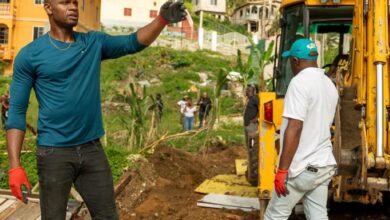Colombia: peace with the ELN
Since the 1st of October, the second biggest guerrilla group in the South American nation, alongside the Government, initiated a ceasefire

Leer en Español: El camino hacia la paz con el ELN
The approach between the Colombian Government and the ELN to achieve a peace agreement it is not new. During the last 30 years, both sides have had a long history of meetings in the hopes to reach a deal leaving the country without an internal war. However, the process during the presidency of Juan Manuel Santos keeps the hopes of a happy ending high.
The ELN group was formed in 1964, inspired by the Cuban revolution which had just then risen to power. At the beginning, there were only 18 men who had just arrived from Cuba after having been chosen to study abroad sponsored by Fidel Castro himself. During their first years, the rebel group operated in the Santander department (east), but during the 70’s, the group quickly spread itself across the country.
Due to stronger presence and greater capacity of the FARC guerrilla, the ELN was considered a secondary problem. However, the group attacked strategic places affecting multinationals, infrastructure, attacking policemen and soldiers, and kidnapping political leaders, as well as wealthy individuals.
This is the peace process timeline between the government and the ELN.
Lea También: Colombia: Peace talks with ELN rebel group begin
First attempt, president Belisario Betancur 1982-1986
The first president to dialogue with the ELN was Belisario Betancur during his administration (1982-1986). Betancur tried to negotiate with the Farc, the ELN, and the M19 guerrillas. The dialogue was unsuccessful because of the internal division of the country at that point in time and the assassination of various left wing leaders (most of them close to the Farc).
Second attempt, president Virgilio Barco 1986-1990
The second endeavor to negotiate with the ELN (and the other guerrillas) was during the Virgilio Barco administration. The president created the Peace Counselling, who negotiated with Simon Bolivar’s Guerilla Coordinator conformed by the ELN, FARC, EPL, and the M19. At the end of the negotiation, just the M19 agreed to be completely disarmed. But the neither the ELN or the other groups showed a true desire of peace.
Third attempt, president César Gaviria 1990-1994
During the bloodiest years of the fight against Pablo Escobar and his Medellin Cartel, the Government tried the third attempt of a peace dialogue. The president César Gaviria (1990-1994) negotiated with the ELN in Venezuela and Mexico. The process seemed hopeful, but the kidnap of the former minister Angelino Durán by the EPL, and his eventual death in captivity, halted the dialogues for good.
Fourth attempt, president Ernesto Samper 1994-1998
Ernesto Samper’s process was the closest one in achieving a peace treaty. The president also obtained a preliminary agreement with the ELN. But the end of Samper’s administration put the agreement on hold. His successor, Andrés Pastrana gave more importance to the peace process with the Farc, who was the strongest and biggest threat within the country. At the end, neither dialogues were successful.
Fifth attempt, president Álvaro Uribe 2002-2010
The president Alvaro Uribe (2002-2010) also tried to negotiate a peace agreement with the ELN. On one side, the president attacked and depleted the Farc, and on the other hand, tried to advance in treaties with the second largest guerrilla. However, the attempts of Uribe’s administration didn’t achieve a significant outcome.
The last attempt, Juan Manuel Santos 2010- present
Right now, president Juan Manuel Santos just finalize the war between the Colombian Government and the Farc guerilla. Despite the polarization of the country, the peace atmosphere can be the most important push to achieve a final treaty. At the moment, both sides are in a cease fire and they are negotiating in Quito, Ecuador. Santo’s administration is coming to an end, so the outcome of the process will depend on the next president.
Latin American Post | Santiago Gómez Hernández
Copy edited by Susana Cicchetto





